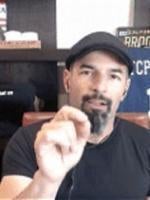So it's a slow TCPA news day and I know you’re all hungry for some content, so let’s do a quick university session.
Yesterday, I did a quick story about a DEFAULTED TCPA defendant surviving a certification effort because the Plaintiff did not present evidence sufficient to allow class members to be identified–so the implied requirement of “ascertainability” was not met and certification was denied.
A surprisingly large number of you reached out to me about that little case and it seems clear that lingering questions about ascertainability exist. So let me do a quick primer for you and see if I can help clear things up.
First principles: in order to certify a case the Plaintiff must demonstrate the requirements of Rule 23(a) are met and in order to recover money damages, they also need to show rule 23(b)(3) (predominance) is also met. While the word “ascertainability” does not appear in Rule 23 the courts have read the requirement into the statute–and for good reason, as we’re about to see.
While we throw around the word “ascertainability” as if we were talking about only one thing, the word actually contemplates three distinct legal concepts–although the case law largely conflates these issues (and some Circuits purport to have done away with the ascertainability requirment have actually only done away with part of it–but we’ll get to that.) But all three concepts come down to the idea that a class cannot be certified unless the members are readily identifiable.
Type 1 Ascertainability: The Need for A Class Defined With Objective Criteria
The most basic requirement of an ascertainable class is that it be defined using clear, non-vague, and objective criteria.
In a TCPA case a class defined as “all users of cell phone numbers who were called using x dialer where the source of the number was y website, as it existed during the timeframe of a date to b date” would be objective. Every piece of the definition turns on a real-life fact. But, as we shall see, there may still be ascertainability issues lurking here.
By contrast: “All users of cell phone numbers called using an ATDS without express consent” is not defined using objective criteria. Instead merits determinations are baked into the definition– whether an “ATDS” was used or whether the consent obtained by the caller was legally sufficient “express consent” are issues that must be determined by the jury. They are not objective facts existing independent of those legal findings.
Every court in every circuit requires class definitions to be defined using objective criteria. Any definition failing this basic test is uncertifiable–indeed they should be stricken at the pleadings stage.
Type 2 Ascertainability: The Need to Be Able to Discern Class Members Generally
The second form of ascertainability looks at the impossibility of determining who is in the class.
So, for instance, a class consisting of “Everyone wearing blue pants on the day they received a call from x number” might be objectively defined–every component of class membership is an objective fact–but unless the Plaintiff has a really good expert that can crack the universal-code of deterministic outcomes, there is just no way you can figure out who was wearing blue pants on the day the call was received.
Another common TCPA example is “everyone who received a call/text/fax from x company using y dialer where the number came from z source.” Again this class is defined objectively–every component is a fact–but determining who actually happened to pick up a phone so as to be the “recipient” of a call is impossible.
Often times when you hear about “ascertainability” this is the concept the courts are considering. Many courts–such as the Fourth Circuit Court of Appeals–require that the Plaintiff demonstrate an “administratively feasible” way to find class members–something short of calling each class member and asking what color pants they had on the day in question.
Other courts–like the Eleventh Circuit–actually reject the administrative feasibility test and require nothing more than objective class definitions. In theory, therefore, a federal Court in Florida might certify the “blue pants” class–but hopefully, the manageability prong of the “superiority” test would come into play to prevent certification. (Notice that technically the presence of blue pants is not an individualized issue across class members–all of the defined class is wearing blue pants. So this is an ascertainability issue, not a commonality issue.)
As to the “recipient” definition, most courts will simply re-define “recipient” to mean “subscriber” or “user” and then turn to Plaintiff’s expert report on the subject, which brings us to our last sort of ascertainability:
Type 3 Ascertainability: The Need to Identify the Actual Person in the Class (and Where Self-Identifying Affidavits Might Sometimes be Appropriate vs Where they Are NEVER Appropriate)
This sort of ascertainability always bugged me. While it is technically a valid argument–and, indeed, quite a few TCPA class actions have been denied certification on this basis– it just feels a bit… squishy. And I hate squishy.
The way Type 3 ascertainability presents in TCPA cases is that a Defendant will argue although a list of phone numbers meeting certain criteria can be identified, the actual person using those numbers cannot be. (A variation of this argument is that the Defendant cannot identify whether a number was a cell phone or not at the time of a call because no historic database of wireless block identifiers exists.)
So using my original example of “all users of cell phone numbers who were called using x dialer where the source of the number was y website, as it existed during the timeframe of a date to b date” the Defendant would argue: i) you can’t identify who the actual “users” of each number were; and ii) you can’t identify which numbers were cell phone numbers at the time. (A clever Plaintiff might try and change course and argue that the class is “subscribers” instead of “users” but that triggers a Ramirez standing issue–if the subscriber did not answer the phone and was not charged for the call there can be no Article III standing.)
In this instance, many courts–even those where the “administrative feasability” test is applied–will turn to self-identifying affidavits to find class members. While I hate self-identifying affidavits, using them to overcome “Type 3” ascertainability makes some sense because i) the class was objectively defined so the court (and class members) can figure out whether or not they are in the class; ii) some information about the class member–usually a phone number–exists to make class notice possible and contact with real class members probable; and iii) the class member is just confirming they actually used a number that some public record linked to them.
While it is true that these public record reverse-append searches are a disaster, there is at least some linkage between the number and the consumer being noticed. So it is not ludicrous to presume that individuals returning those affidavits are telling the truth.
It is critical to note, however, that using self-identifying affidavits for the narrow purpose of, for instance, determining whether Bob Smith actually used cell phone xxx-xxx-xxxx during key date ranges is VASTLY different than using such affidavits to try the case.
For instance, I have seen plaintiffs try to use affidavits to have Bob Smith attest he actually received a call on xxx-xxx-xxxx from a company regarding b product using an ATDS and without his consent to prove liability as a merits issue. That is CRAZY inappropriate and a complete violation of the defendant’s due process–the Defendant is absolutely allowed to put Bob on the stand and cross-examine him on every merits element in the case. And the Defendant is entitled to have the fact finder consider all other admissible evidence in its favor. For instance, if Defendant has evidence that it did not use a dialer to call the number at issue, the finder of fact absolutely needs to consider that evidence and weigh against admissible evidence–i.e. live testimony–from Bob to the contrary. You can’t just take Bob’s word for it and grant a judgment in his (and other class member’s) favor.
That testimony from every class member might be needed to prove a TCPA case is precisely why TCPA cases should rarely be certified. So be on the lookout for Plaintiffs who try to short circuit TCPA trials by misusing the self-identifying affidavit trick to freeze a Defendant out of the trial-on-the-merits the Constitution guarantees–sometimes that’s their only hope of certification!
The same due process concerns exist even when using affidavits for the narrow purpose of ascertaining class membership in a objectively defined class but they are generally much lower–technically the Plaintiff would first have to try the case and prove at trial (through common evidence with other class members) that a cell phone number in fact received a call, from the caller, for a specific purpose, using a specific piece of regulated technology, and without the needed consent. Then, and only then, is the last required piece of notifying Bob and asking him to confirm he was actually using that cell phone triggered.
I get it, technically the Defendant should have the right to question Bob on that issue–which is why I hate self-identifying affidavits–but from a Court’s perspective, if the Defendant is guilty of calling 100,000 cell numbers without express consent using a prerecorded call and the Plaintiff has evidence as to who the users of those numbers are you can imagine why the Court isn’t going to let that Defendant off the hook just because the Plaintiff didn’t put every class member on the stand to attest they actually used the number at issue.
So hopefully this makes sense to everyone. In summary:
Type 1 Ascertainability–totally critical and should be considered in every single TCPA case right from the start. Don’t let the plaintiff get away with broad discovery on an uncertifiable class. Strike it!
Type 2 Ascertainability–important but will vary from circuit to circuit and from case to case. Raise this argument intelligently, with the help of an expert, and relying on the proper and applicable legal framework in your jurisdiction.
Type 3 Ascertainability–a valid argument but of limited utility for Defendants in most TCPA cases.
And never NEVER let a TCPA Plaintiff try to certify a case by using self-identifying affidavits on MERITS issues.




 />i
/>i

